Planting Elderberry - Care Of Elderberries

Elderberry (Sambucus) is a large bush or shrub that is native to the U.S. and Europe. The bush produces bluish-black fruit in bunches that are used in wines, juices, jellies, and jams. The berries themselves are quite bitter, so they are rarely eaten by themselves. Interested in growing your own elderberries? Read on for more information.
How to Grow Elderberry Plants
Growing elderberries is not all that difficult. They can tolerate different conditions like poor soil or overly wet areas. One thing growing elderberries cannot tolerate, however, is drought.
When planting elderberry bushes, you should note that the berries will grow on the bushes the first year you plant them. Just remember that the berries will do better the second year.
Elderberry planting is done best in well-draining, loamy soil. Sandy soils should be improved by adding a few inches (5 to 10 cm.) of organic matter.
When elderberry planting, make sure to allow for cross-pollination. Therefore, two or more cultivars can be planted near each other. Plant them one meter apart (3 ft.) in rows that are four to five meters (13 to 16.5 ft.) apart.
Make sure you do your elderberry planting early in the spring. After planting, be sure to water them so they get a good start.
Care of Elderberries
After you have done your elderberry planting, you should weed once in a while, but do so carefully. You do not want to disturb the roots. Use mulch where it is necessary to prevent weed growth, and pluck weeds that manage to sneak through.
Gardening tips, videos, info and more delivered right to your inbox!
Sign up for the Gardening Know How newsletter today and receive a free download of our DIY eBook "Bring Your Garden Indoors: 13 DIY Projects For Fall And Winter".
When growing elderberries, remember that the bushes require about an inch or two (2.5 to 5 cm.) of water each week. Therefore, if summertime comes and you find that you are running into periods of no rain, be sure to water them often.
The first two years after planting elderberry bushes, you should let them grow wildly. Do not prune and do not bother picking the berries. After that, you can prune the elderberry bushes in early spring by cutting them back and removing all the dead areas. This way, the bushes will grow and produce a lot of berries for you.
Right around mid-August and mid-September, there is a 5- to 15-day ripening period. This is the time when you want to begin harvesting elderberries. Be sure to pick them before the birds do, and enjoy!
-
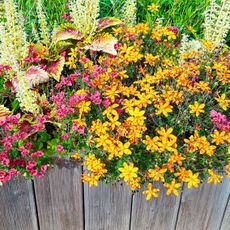 Ultimate Raised Beds For Small Gardens: Try These 5 Raised Options For Compact Corners
Ultimate Raised Beds For Small Gardens: Try These 5 Raised Options For Compact CornersThe perfect raised beds for small gardens squeeze every bit of useful space out of the most productive corners. Here are some practical space-saving ideas you can try
By Mary Ellen Ellis
-
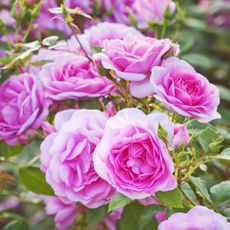 Best Romantic Old Garden Roses To Grow For A Dreamy Display
Best Romantic Old Garden Roses To Grow For A Dreamy DisplayDiscover abundantly blooming old-fashioned garden rose varieties that will be star performers in beds, borders, trellises, and containers.
By Tonya Barnett
-
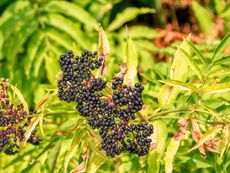 Elderberries Not Fruiting – How To Get Elderberry Fruit
Elderberries Not Fruiting – How To Get Elderberry FruitNo berries on elderberry? There may be a simple explanation. Read on for a helpful tips that may resolve the problem of elderberries not fruiting.
By Mary H. Dyer
-
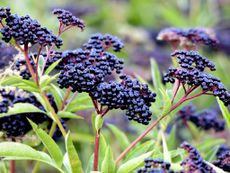 Germinating Elderberry Seeds – Elderberry Seed Growing Tips
Germinating Elderberry Seeds – Elderberry Seed Growing TipsIf you are cultivating elderberries for commercial or personal harvest, growing elderberry from seed may not be the most efficient way to go, however, it is possible. Click here to learn more.
By Teo Spengler
-
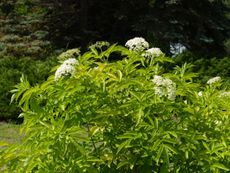 Transplanting Elderberries – How To Transplant Elderberry Bushes
Transplanting Elderberries – How To Transplant Elderberry BushesElderberry plants are attractive and productive. If you have a poorly sited shrub, moving an elderberry is not difficult. Get tips here.
By Teo Spengler
-
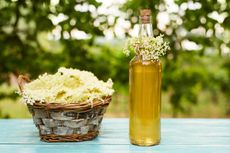 What To Do With Elderflowers: How To Use Elderflowers From The Garden
What To Do With Elderflowers: How To Use Elderflowers From The GardenMany gardeners and cooks know about elderberries, the small dark fruits that are especially popular in European cuisine. But before the berries come the flowers, which are tasty and useful in their own right. Click here to learn what to do with elderflowers.
By Liz Baessler
-
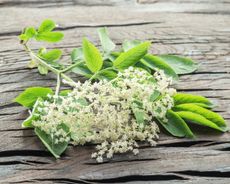 Elderberry Flowers – Growing Elderflowers In The Garden
Elderberry Flowers – Growing Elderflowers In The GardenElderberry is most well-known for its fruit, but you can also grow elderberries for their flowers. American elder is a fast-growing bush that will tolerate a variety of conditions and requires little care and maintenance. Learn more in this article.
By Mary Ellen Ellis
-
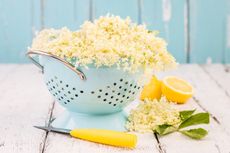 How To Harvest Elderflowers – Tips For Picking Elderflowers
How To Harvest Elderflowers – Tips For Picking ElderflowersElderflowers have a long tradition of use and colorful lore. They are most useful in herbal concoctions during flu and cold season. Picking elderflowers when in season and drying them is an excellent way to preserve them for fall and winter sick days. This article will help.
By Bonnie L. Grant
-
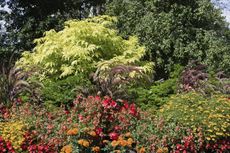 Elderberry Plant Companions – Tips On Planting With Elderberries
Elderberry Plant Companions – Tips On Planting With ElderberriesGardeners love elderberries because they attract pollinators, like butterflies and bees, and provide food for wildlife. These shrubs can be planted alone but look best with elderberry plant companions. What to plant with elderberries? This article will help.
By Teo Spengler
-
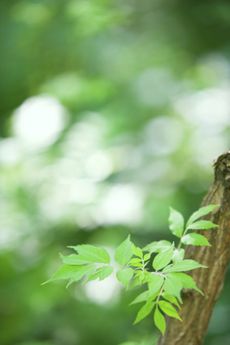 Rooting Elderberry Cuttings: How To Propagate Elderberry Cuttings
Rooting Elderberry Cuttings: How To Propagate Elderberry CuttingsElderberries are woody plants, thus starting elderberry from cuttings is a simple and common method of elderberry propagation. How to propagate elderberry cuttings and when is the best time to take elderberry cuttings? Learn more here.
By Amy Grant